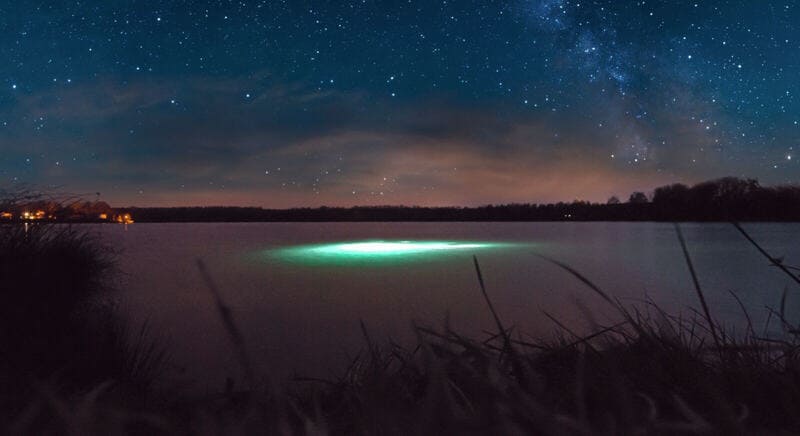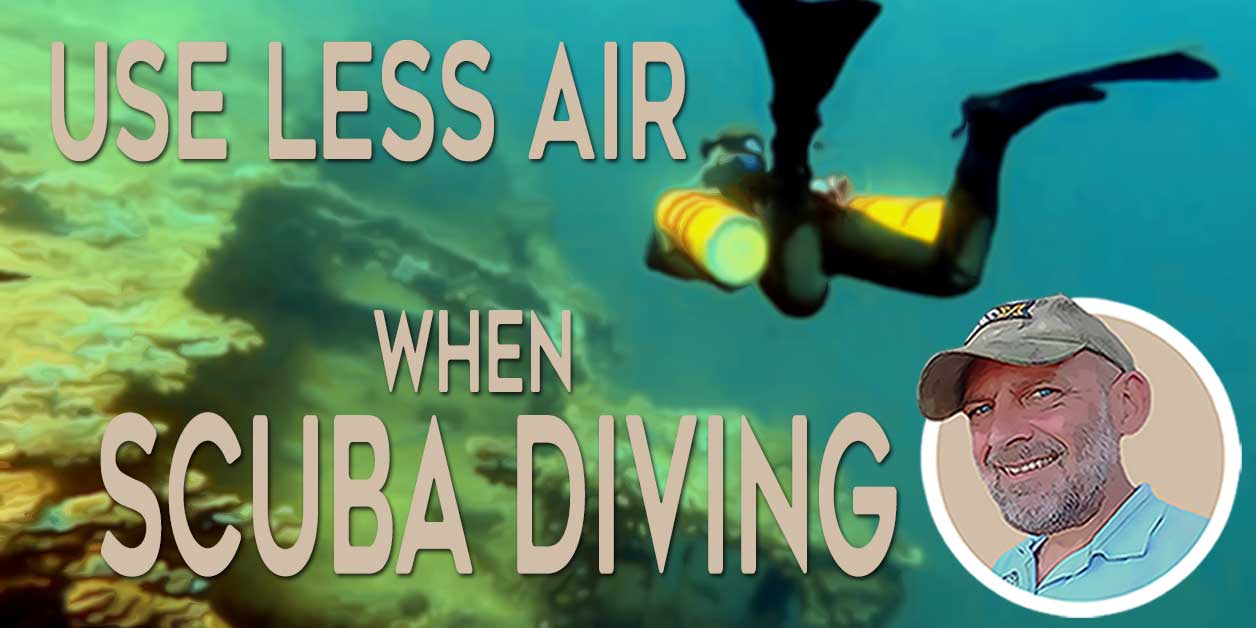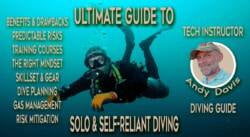Your Ultimate Night Diving Guide: Dive into Darkness
Night diving is an exhilarating and unique experience that allows divers to explore the underwater world in a completely different light, quite literally.
While many of the basic skills and rules used for daytime diving apply to night diving, there are specific techniques and procedures to ensure a safe and enjoyable experience. This comprehensive guide covers everything from choosing a dive site to mental preparation, equipment, and key recommendations.
1. What is Night Diving?
Understanding the Allure of Night Diving
Night diving offers a unique perspective on the underwater world. The allure lies in its ability to transform the familiar into something mysterious and captivating.
As the sun sets and darkness descends, marine life undergoes a remarkable transformation. Creatures that remain hidden during the day come to life, displaying intriguing behaviors.
The limited visibility of night diving also adds an element of adventure, making each dive a thrilling exploration into the unknown.
2. Training for Night Diving
Why Proper Training is Essential
Night diving is not something you should undertake without proper training. While many of the skills learned in daytime diving apply, there are unique challenges to contend with when diving in the dark.
Specialized training ensures you are well-prepared for these challenges. It covers important aspects such as underwater communication, navigation, and dive light usage.
Night Diving Certification Agencies and Courses
Several reputable certification agencies offer night diving courses. These courses are designed to equip divers with the skills and knowledge necessary for safe and enjoyable night dives.
- Popular scuba training agencies offering night diving training include RAID, PADI, NAUI, SDI, and SSI.
- Typical prerequisites for a Night Diver course are Open Water Diver or Junior Open Water Diver.
- Night Diver courses typically involve 2-4 training dives (PADI requires 3 dives).
- Enrolling in a course from one of these organizations is a crucial step for anyone looking to safely explore the underwater world after dark.
Gaining Confidence Through Guided Night Dives
For beginners or those looking to build confidence in night diving, guided night dives are an excellent option.
- Diving with experienced instructors or dive leaders provides reassurance and allows you to become more comfortable with the unique challenges of night diving.
- These experienced divers can also share their knowledge about the nocturnal marine life you’ll encounter.

3. Specialist Night Diving Activities
Exploring the Depths with Specialized Night Diving Activities
Night diving opens up a world of possibilities for specialized activities that are not possible during the day. Two such activities are Fluorescent (Fluo) Diving and Blackwater Diving.
Fluo Diving: Unveiling the Neon Underwater World
Fluorescence night diving, often referred to as “fluo diving,” is a captivating underwater activity that introduces divers to a surreal and vibrant world beneath the waves. This unique diving experience involves the use of specialized torches or lights that emit fluorescent wavelengths. When these lights interact with certain marine organisms and corals, they trigger a phenomenon known as fluorescence.
During a fluo dive, the underwater world comes alive with vivid and neon-like colors. Corals, anemones, and other creatures that possess fluorescent pigments glow brilliantly under the influence of these specialized lights. This creates a stunning and almost psychedelic underwater landscape that is truly mesmerizing.
Fluorescence night diving is not only about witnessing the vibrant colors but also about exploring the hidden beauty of marine life that often goes unnoticed during daytime dives. It offers divers a chance to see the ocean in an entirely new light, providing a unique perspective on the wonders of the underwater world.
To enjoy fluo diving, divers typically use specific equipment, including UV torches or filters for their dive lights. It’s an extraordinary experience that combines the thrill of night diving with the enchantment of discovering the ocean’s hidden fluorescence.
Blackwater Diving: Venturing into Extreme Depths
Blackwater diving is a unique type of scuba diving that takes place in the open ocean at night. It involves drifting with the current, suspended in the water column, and using floodlights from the dive boat to attract deep-sea creatures. Divers are usually tethered to a line that descends beneath the dive boat.
Blackwater dives take place over very deep locations, although divers will remain at depths ranging from 20 to 40 meters.
This form of scuba diving is popular because it gives an opportunity to witness a daily vertical migration of pelagic plankton and marine life larvae. Those, in turn, attract larger creatures such as tunas, manta rays, swordfish, cephalopods, and even whales.
Blackwater diving is different from a regular night dive as it takes place in deeper waters, and divers must be comfortable with diving in the dark and controlling their buoyancy. However, it is an opportunity to see and photograph rare macro creatures that cannot be seen during the day or on reef night dives.
Underwater photographers, in particular, find blackwater diving to be an excellent opportunity to capture striking shots of bioluminescent creatures and other marine life.
4. Dive Equipment for Night Diving
Having the right diving equipment is crucial for a safe and enjoyable night dive. Your dive gear should include dive lights, safety equipment, and navigational aids.
Dive Lights: Your Beacon in the Darkness
Dive lights are your lifeline during a night dive. They illuminate your path and reveal the underwater world’s secrets.
- It’s essential to carry both a primary and backup torch, ensuring they are reliable and powerful enough for adequate visibility.
- Choose lights with appropriate beam width, burn time, and depth rating for your specific needs.
Selecting the Right Dive Light:
Before you dive into the darkness, decide on the type of dive light that suits your preferences. Do you fancy a wide beam, a spot beam, or perhaps a combination of both? Consider the battery type and life span of your chosen light.
Primary Dive Light:
Your primary light should be the powerhouse of your night dive. It is important to select a high-quality light that will be less likely to spontaneously fail or flood when you are underwater.
- Look for one with a high lumen rating for brightness. I would suggest a minimum of 1200 lumens, but many lights offer significantly more (at greater cost).
- It’s crucial to opt for a primary light with an extended burn time to ensure it won’t leave you in the dark during your dive. Aim for 2-3x the duration of your typicall planned dive time.
- Some primary lights come with an option to switch between a tightly focused and wide flood beam.
- These are ideal because a night diver benefits from having a tight beam for communicating, and a wide beam illuminates a larger section of the underwater environment.
- The majority of modern recreational dive lights are LED and have rechargeable batteries.
Top Tip: A hands-free mount (soft or hard Goodman handle) doesn’t impede operating your scuba equipment during dives.
Backup Dive Light:
In the event your primary light fails (or your buddy’s does), having a backup light is a must for safety. While it doesn’t need to be as powerful as your primary, it should provide enough illumination for a safe return to your exit point.
- 500 to 1000 lumens is sufficient
- Expect to pay approx $50
- User-replaceable, disposable, batteries (usually AA or AAA) offer convenience and reliability in a backup role.
Mask Dive Lights:
Consider carrying an additional smaller light which is compact and versatile. It can be attached to your mask strap, offering continued illumination if your hands are busy.
- 250 to 500 lumens is sufficient
- Expect to pay $25 to $50
- A diffuse/wide beam is best
- Many smaller lights come with a mask attachment mounting
Tank Signal Lights:
Tank lights serve as safety markers to help divers locate each other in the water. Opt for a small bulb or LED light with options for a steady glow or continuous strobe.
Diving Compasses
Maintaining your orientation during a night dive is crucial. Carrying a compass is standard practice.
- Look for one that’s easy to read in low light conditions, whether it’s illuminated, absorbs light, or reflects ambient light.
- While many dive computers include digital compasses, having a standard compass as a backup is recommended for added security.
Safety Equipment and Navigational Aids
In addition to dive lights, there are other safety and navigational tools to consider.
- Chemical snap lights or strobe lights attached to divers enhance visibility for others.
- Surface maker buoys (SMBs or DSMBs) should have similar lights for easy recognition.
- Exit points should be marked with lights, such as strobes beneath boats or aligned shore lights.
- If diving in remote areas, or where strong currents are present, you should equip yourself with one or more emergency surface signaling devices, and/or a locator beacon.
5. Skills Needed for Night Diving
Developing the Skills Required for Night Diving Success
Night diving requires specific skills and techniques to ensure safety and enjoyment. These skills include navigational techniques for low visibility and safety protocols.
Navigational Techniques for Low Visibility
Navigating underwater in the dark can be challenging. Familiarity with the dive site from daytime visits aids in navigation during night dives.
It’s also important to remember that night dives progress more slowly, allowing divers to explore unique nocturnal marine life. For beginners, diving with an experienced instructor or divemaster for initial night diving is a wise choice.
Safety Protocols and Emergency Procedures
Safety should always be a top priority in night diving.
- Proper equipment maintenance, pre-dive checks, and battery charging are crucial to avoid unforeseen issues underwater.
- Night dives should also be shorter than daytime dives because it is easier to lose track of time and depth, which risks exceeding no-stop (NDL) limits.
- Plan your gas consumption in advance, as it can be easier to lose situational awareness of your SPG and gas supply in the dark.
- Dive slowly at night: you will see more and there is less chance of getting disoriented or colliding with the environment.
- Apply accurate buoyancy control when night diving; stinging marine life, such as urchins, are more active in the dark.
6. Techniques and Practices for Night Diving
Best Practices for an Enjoyable and Safe Night Dive
Executing the right techniques and practices is essential for a successful night dive. These include entry and descent methods, managing buoyancy in the dark, and communication and buddy systems.
Entry and Descent Methods
Your entry into the water sets the tone for the entire dive.
- If you’re nervous about your first night dive from a boat, consider descending down a ladder rather than striding in from the swim platform or gunwale.
- Take your time and proceed at your own pace.
Managing Buoyancy in the Dark
Buoyancy control is critical in night diving. Proper buoyancy allows you to move smoothly underwater and avoid disturbing the environment. It’s also important to be aware of your depth at all times, especially in the dark.
Communication and Buddy Systems
Effective communication is essential in night diving. Divers use hand signals and lights to convey information to their buddies.
- Be mindful not to shine your light directly into your buddy’s or any other diver’s eyes, as it can be blinding.
- Use your light to illuminate their body or the bottom in a quick back-and-forth or circular motion to get their attention.
7. Is Night Diving Stressful?
Night diving introduces unique stressors that affect divers both mentally and physically. Understanding the psychology behind night diving stress is crucial for a safe and enjoyable experience.
- Psychological Stress Response: Research has explored the psychophysiological stress response in SCUBA divers, shedding light on how night diving can trigger stress reactions in individuals.
- Human Factors: Factors like darkness, unfamiliar environments, and isolation can contribute to stress in night divers. Human factors play a significant role in how divers manage stress during night dives.
- Stress Management: Divers are encouraged to learn stress management techniques to cope with the challenges of night diving. This includes recognizing stress triggers and implementing strategies to stay calm underwater.
- Psychological Support: Organizations like Divers Alert Network (DAN) provide resources on psychological issues related to diving, emphasizing the importance of addressing mental aspects of diving safety.
- Enhancing the Experience: Psychology can enhance the experience of scuba diving, including night dives. Understanding the psychological aspects of diving can lead to a more fulfilling and enjoyable underwater adventure.
- Stress and Panic Management: DivePsych provides resources on stress and panic management for divers, emphasizing the importance of psychological preparedness for underwater challenges.
In summary, night diving presents unique psychological challenges, but with proper training, stress management techniques, and an understanding of the psychology behind diving, divers can enjoy this exhilarating experience safely and confidently.
8. What Can You See on a Night Dive?
A night dive offers a completely different perspective on marine life. As the sun sets and darkness envelops the underwater world, a new cast of characters takes the stage.
- Bioluminescent Organisms: Some marine organisms emit their own light, creating a magical and otherworldly ambiance.
- Nocturnal Fish: Many species of fish that hide during the day become active at night. Observing their hunting and feeding behaviors is a unique experience.
- Predator Behavior: Predators, such as Whitetip reef sharks, may be inactive during the day, but go on the hunt at night.
- Octopuses and Cuttlefish: These intelligent cephalopods are often spotted on night dives, displaying their fascinating colors and movements.
- Crustaceans: Night dives are an excellent opportunity to spot various crustaceans, including lobsters, crabs, and shrimps, as they venture out of their hiding spots.
- Coral Polyp Feeding: Observe coral polyps extending their tentacles to feed on planktonic organisms, a sight rarely seen in daylight.
9. Night Diving Photography
Night diving photography is a challenging but rewarding form of underwater photography. To capture stunning underwater scenes at night, consider these tips:
- Use Appropriate Gear: Invest in a quality underwater camera with low-light capabilities. Good lighting is essential for night photography.
- Master Buoyancy: Maintain excellent buoyancy control to avoid disturbing marine life and damaging delicate coral while composing your shots.
- Use a Dedicated Focus Light to assist with focusing in low-light conditions underwater. This helps your camera’s autofocus system work more effectively
- Select the Right Settings: Adjust your camera settings for night conditions.
- Use a wide aperture, high ISO, and slower shutter speed to capture more light.
- Experiment with white balance for accurate colors.
- Focus on Composition: Pay attention to composition. Use leading lines, framing, and the rule of thirds to create visually appealing images.
- Be Patient and Cautious: Night dives can be disorienting. Take your time, be patient, and stay aware of your surroundings. Approach marine life slowly and cautiously.
- Use External Lighting: Consider using external underwater strobes or video lights to add artificial light and enhance your subjects’ details.
- Practice and Review: Practice night photography in controlled conditions before attempting challenging dives. Review your shots and learn from your mistakes.
By following these tips and continuously improving your skills, you can capture mesmerizing images of the underwater world at night.
Excellent Resources For Night Diving Photography
- divephotoguide.com – Underwater Photography at Night
- uwphotographyguide.com – 5 Tips for Underwater Photography at Night
- uw360.asia – Tips & Techniques: Underwater Photography At Night
- proshotcase.com – Tips & Tricks For Better Underwater Night Photography
- sportdiver.com – Underwater Photography Tips: How to Take Night-Dive Photos
- ikelite.com – Shedding Light on Night Diving
- scubapro.johnsonoutdoors.com – Tips to Improve Your Night Diving
- khaolakexplorer.com – Underwater Photography at Night
10. Night Diving Is Popular For Good Reasons
Night diving is a captivating and transformative experience that allows divers to witness the mysteries of the underwater world under the cover of darkness.
With proper preparation, training, and equipment, divers can unlock a world of nocturnal wonders and create unforgettable memories beneath the waves.
Whether you’re drawn to the thrill of exploring in the dark or the allure of fluorescent marine life, night diving offers something truly special for every underwater adventurer.
About The Author

Andy Davis is a RAID, PADI TecRec, ANDI, BSAC, and SSI-qualified independent technical diving instructor who specializes in teaching sidemount, trimix, and advanced wreck diving courses.
Currently residing in Subic Bay, Philippines; he has amassed more than 10,000 open-circuit and CCR dives over three decades of challenging diving across the globe.
Andy has published numerous diving magazine articles and designed advanced certification courses for several dive training agencies, He regularly tests and reviews new dive gear for scuba equipment manufacturers. Andy is currently writing a series of advanced diving books and creating a range of tech diving clothing and accessories.
Prior to becoming a professional technical diving educator in 2006, Andy was a commissioned officer in the Royal Air Force and has served in Iraq, Afghanistan, Belize, and Cyprus.
In 2023, Andy was named in the “Who’s Who of Sidemount” list by GUE InDepth Magazine.
Purchase my exclusive diving ebooks!
Night Diving FAQs
Night dives can be safe when conducted by certified divers and guided by experienced dive professionals. Proper training, equipment, and adherence to safety protocols are essential for safe night diving.
Night diving offers a unique and thrilling experience, allowing divers to witness nocturnal marine life and different behaviors. Whether it’s “better” depends on personal preferences, as some divers prefer the tranquility and different sights of night dives, while others may prefer daytime diving.
Yes, you can dive at night if you are a certified scuba diver with the appropriate training and experience. Night diving is a specialized form of diving that requires additional training and equipment, such as underwater lights.
“Night dive” typically refers to the activity of scuba diving during the nighttime. It involves exploring underwater environments after sunset, using underwater lights to illuminate the surroundings, and observing nocturnal marine life.
Night diving occurs in low-light to completely dark underwater conditions.
The depth of a night dive varies based on location and plan but can range from shallow reefs to deeper sites. Dives less than 18m/60ft are most common.
Essential skills include using underwater lights, buoyancy control, navigation, equipment operation, and communication.
Any certified scuba diver can conduct night diving, although night diving certification training increases safety and may be required by dive trip operators.
Night diving offers a chance to witness different marine behaviors, mysterious ambiance, and a sense of adventure.
Specialized training courses like PADI Night Diver Specialty, or equivalent, are often required by dive centers, liveaboards and dive boat operators.
Essential gear includes underwater lights, dive computer, compass, and signaling devices.
Originally posted 2023-09-14 18:30:29.















